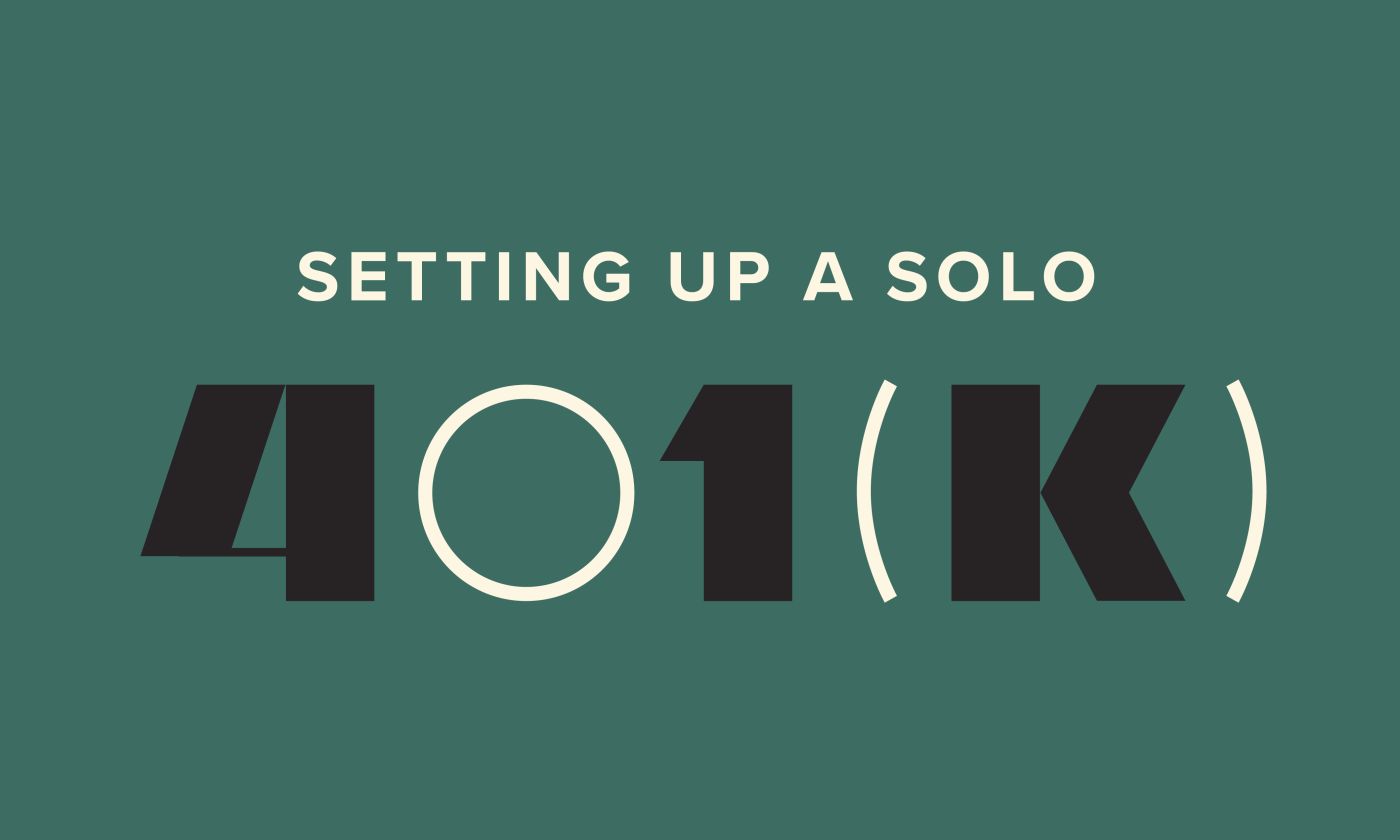For many younger Indies, preparing for retirement ranks way down the priority list. Immediate concerns, like building a stable client base and determining the ideal business structure, take precedence.
Even when retirement is on the horizon, the uncertain reality of making one’s own way can be enough to put the brakes on long-range planning. U.S. News contributor Rodney Brooks rattles off seven reasons why entrepreneurs (including Indys) fail to save for retirement: among them, “putting every cent back into the business” and “selling the business is the retirement plan.”
Sound familiar?
A Little Goes a Long Way
Generally speaking, it’s wise to liberally reinvest your profits, especially if growth is your goal. But there’s no harm in setting a little at a time aside for the day you finally decide to hang up your hat (even if that seems inconceivable right now). Anyway, assuming your closely held solo enterprise is worth anything close to your assumptions is very risky — riskier than a diversified portfolio of market-traded securities, for sure.
If you haven’t already done so, consider opening a traditional IRA or Roth IRA — or both — in your name. Depending on your income and marital status, you may be eligible to deduct traditional IRA contributions up to an annual limit set by the IRS, and to make tax-free Roth withdrawals once you’re age-eligible.
As an independent professional, you may also be eligible for another type of tax-advantaged retirement plan: a solo 401(k). With far higher tax-deductible contribution limits, setting up a solo 401(k) is a great way to reinvest your enterprise’s before- and after-tax profits in, well, yourself.
What a novel idea.
Here’s what you need to know about your solo 401(k)’s rules and benefits, and the process of setting one up (spoiler: it’s not as hard as you think).
The Solo 401(k): A Brief Overview
The solo 401(k) is a one-participant 401(k) plan sometimes called the “solo-k” or “uni-k”. It’s designed for businesses with no employees other than the owner’s spouse. The “owner” may be self-employed (unincorporated) or incorporated as a single-member LLC, S-corp, or C-corp.
Solo-k plans allow two types of tax-deductible contributions, each limited by IRS regulation:
- Elective deferrals: Also known as “personal” or “earned income” contributions. You can contribute up to 100% of your earned income (compensation, as defined by the IRS), subject to an annual contribution limit of $18,500 for plan-holders under age 50 and $24,500 for plan-holder age 50 and over. Both limits apply to the 2018 tax year only and are subject to change in the future.
- Employer nonelective contributions (profit-sharing): Acting in your capacity as an employer (you are self-employed, after all), you can contribute up to 25% of your compensation. However, to determine your actual contribution limit, you’ll need to execute the complex, income-based calculation described in IRS Publication 560.
In 2018, combined employer and employee contributions can’t exceed $55,000 for plan-holders under age 50, or $61,000 for plan-holders age 50 and older.
Under normal circumstances, you must wait until age 59 ½ to make penalty-free withdrawals. Special circumstances, such as separation from service and hardship, may permit withdrawals before age 59 ½. However, these early withdrawals may incur a 10% tax penalty. Traditional solo 401(k) withdrawals are taxable at the ordinary rate; Roth solo 401(k) withdrawals are tax-free after age 59 ½.
Anyone who qualifies for a solo 401(k) can set one up, but there’s no harm in scheduling a quick chat with a tax professional or financial advisor (or both) to determine whether it’s a good fit. For instance, if you can’t afford to put away more than $5,500 for retirement this year, your personal IRA may suit fine for now.
Setting Up Your Solo 401(k), Step by Step
Setting up a solo 401(k) isn’t as tough as you’d think — no accounting or tax law experience required. Here’s a step-by-step outline of the process, with the caveat that every provider is a little different:
1. Choose a provider
First, choose your provider. Most major brokerages offer solo 401(k)s, so the path of least resistance may be to stick with your current investment house (if you have one). If you’d like to shop around, look for providers with:
- Minimal or nonexistent custodial fees
- Low or nonexistent administration fees (for self-directed plans)
- Low trading commissions
- Lots of low-cost fund options
2. Complete the paperwork
You’ll need to fill out some paperwork before officially opening your solo-k. Required documents may include a plan document (prototype plan), adoption agreement, and trust agreement (likely designating you as the trustee). In many cases, an off-the-shelf plan document is sufficient.
Your plan provider should spell out precisely what documents you’ll need to get and remain in compliance with applicable law, but if you have any questions — and this stuff can get confusing — don’t hesitate to consult on-staff qualified plan experts at your brokerage. Use caution around third-party service providers that purport to prepare qualified plan paperwork; they may charge for unnecessary (or unnecessarily customized) documents. Your best resources are your brokerage’s staff and your tax professional.
3. Open and fund your account before the end of the tax year
Once your paperwork is processed, you can officially open your account with your chosen provider. To capture a current-year deduction, try to get your plan set up and funded before December 31. It can take a week or two to process all the requisite paperwork; to be safe, get your documents in by December 15.
4. Make regular contributions (and properly characterize each)
Remember, you can make two types of solo 401(k) contributions: elective deferrals and employer nonelective contributions. Elective deferrals made after January 15 must be characterized in the current tax year; you can make prior-year employer contributions until the tax filing deadline: April 15, or October 15 if you’ve filed for an extension.
5. Stay on top of compliance requirements
An annual Form 5500 filing is the biggest compliance item for plan-holders not taking distributions. However, you won’t have to worry about this until the cumulative plan assets in your solo-k and any/all other one-participant plans exceed $250,000.
Beyond the Solo 401(k)
The solo 401(k) isn’t the only qualified plan available to self-employed professionals. Other options include self-employed SEP-IRA and SIMPLE plans. As these plans can accommodate common-law employees, they might suit you better if your growth strategy includes adding employees other than your spouse.
If you’re not sold on the benefits of a solo-k, or simply want to see what else is out there, take 30 minutes out of your day to learn more about SEP and SIMPLE plans, and to review the IRS’s guidelines for calculating plan contributions and deductions. As always, consult a business tax professional with any questions or concerns — there’s a lot more to know about this stuff than what’s covered here.





